Children tell us how to make learning safe
School should never be a place that is unsafe for children where they might be injured, harmed, or worse.
But this isn’t always the case in the Solomon Islands, where the safety risks in schools vary from the inconvenient to the extreme - from a lack of drinking water, toilets and broken floorboards, to deadly floods and landslides.
We spoke to three young people and their teachers to understand how we can help make their schools even safer for students.
#1: help schools get disaster ready
Princely (14) loves his remote school, which is perched on a misty mountaintop in the Solomon Islands. He has a clear plan for his future. “When I grow up, I want to be a lawyer because we have a lot of issues between our tribe and other tribes,” he says.
Severe weather and related hazards are a constant threat to schools like Princely’s, especially during the six months of the year that make up ‘cyclone season.’
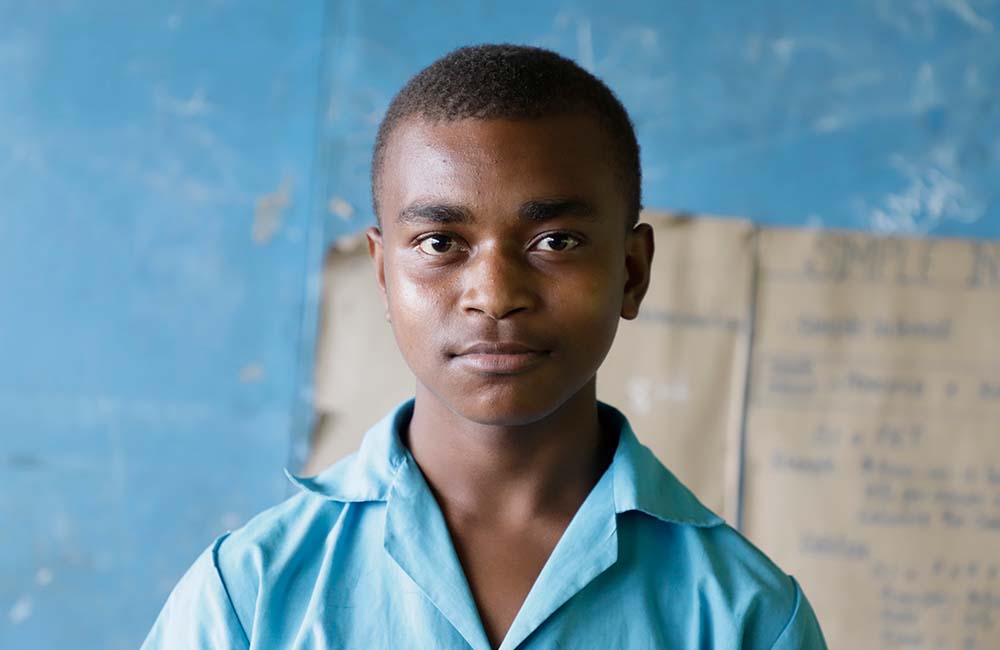
Princely knows the impact disasters can have on a school.
Photo: Collin Leafasia / Save the Children Solomon Islands
“With disasters, there was a cyclone and one of our classrooms fell,” says Princely, gesturing to an empty area of the school where the structure once stood. “Luckily no one was hurt because it happened at night,” he adds.
While disasters are common, emergency procedures and drills are not uniformly implemented across Solomon Islander schools. Many students don’t know what to do if a disaster occurs while they’re in the classroom, leaving them vulnerable to these hazards.
To help address this issue, Save the Children is working with Princely’s school to ensure high quality emergency procedures are in place, so a disaster doesn’t turn into a tragedy. We’ll also help students and teachers practice drills, so they know exactly how to evacuate if they need to.
#2: bring in clean drinking water
Princely’s classmate, Faith (13), walks to school each day with her best friend and the two tell jokes to each other in class. Faith loves learning and dreams of giving back to her community in the future. “When I grow up, I want to be a nurse so I can help people who are sick,” she says shyly.
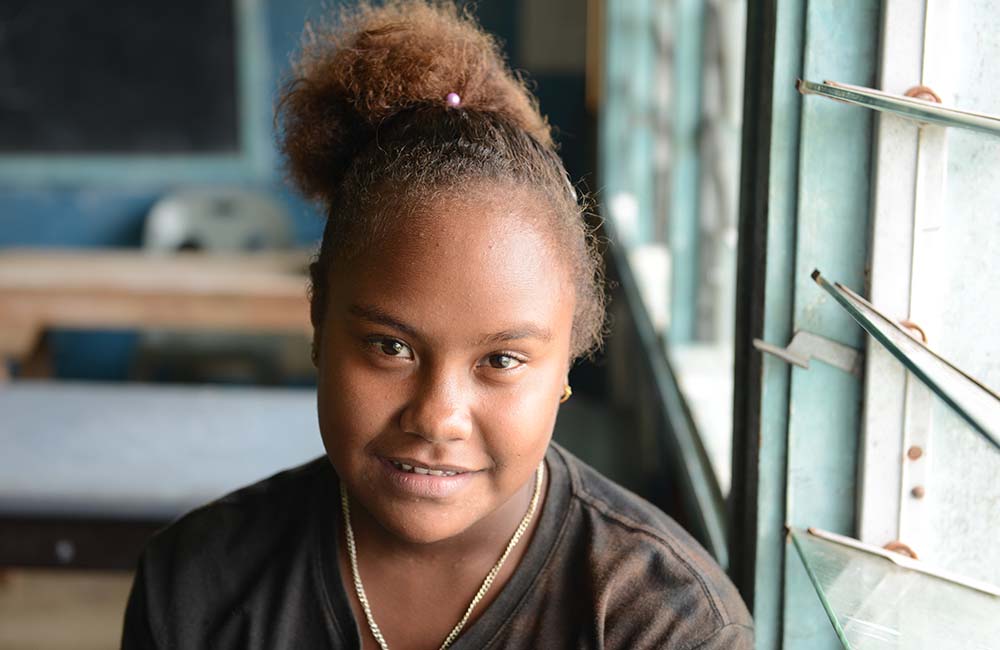
Faith loves attending her school and dreams of being a nurse one day.
Photo: Katharina Glynne / Save the Children Australia
Until recently, access to proper sanitation and hygiene was a big problem at Faith’s school. “Before we had water tanks, we use a stream to get water,” the young girl says, gesturing down the road.
Princely chimes in, describing how students had to make multiple trips back and forth each day to drink. We learn that younger students rarely had enough time during recess to walk to the stream and back, meaning some went thirsty during lessons.
With Save the Children’s support, two new water tanks have recently been installed at the school. These tanks catch the frequent rain that falls in the mountains. Every student now has a place to drink water and wash their hands.
Princely says the situation is a huge improvement. “Now that we have water tanks, we don't have to walk long distance to get water for drinking,” he says, smiling broadly.
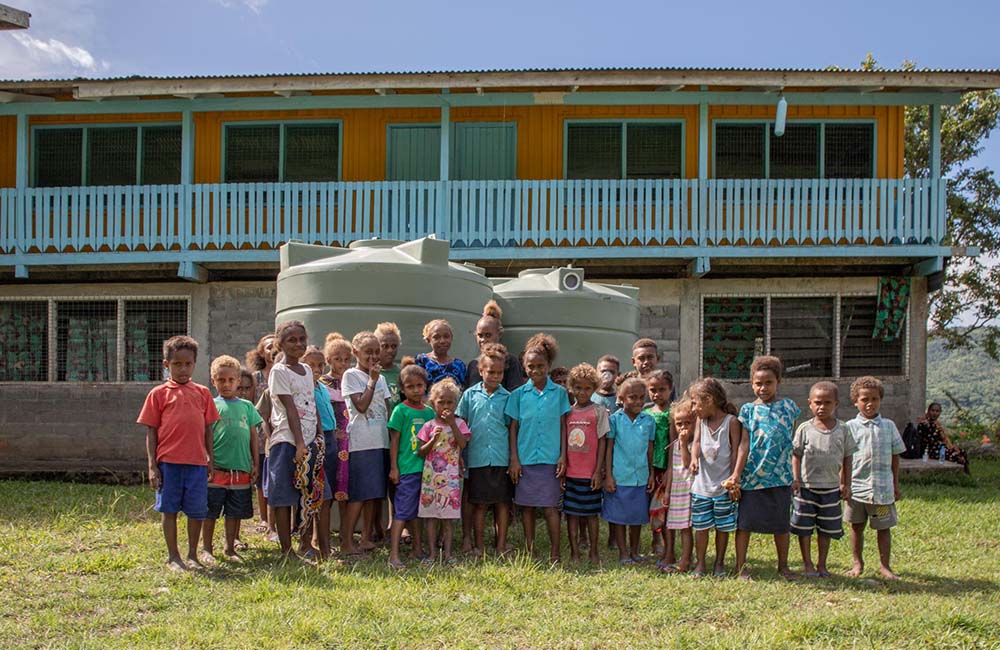
Young students pose with newly installed water tanks at their school.
Photo: Collin Leafasia / Save the Children Solomon Islands
#3: help schools stay covid-safe & adapt to climate change
Steven (18) is proud of his rural school in the Solomon Islands. He sings the praises of his teachers and speaks highly about the way students treat each other as equals.
However, he reports that Covid-19 has been a major challenge for his school, which is attended by more than a thousand students. The pandemic arrived late in the Solomon Islands, with the first lockdowns coming into force in late 2022.
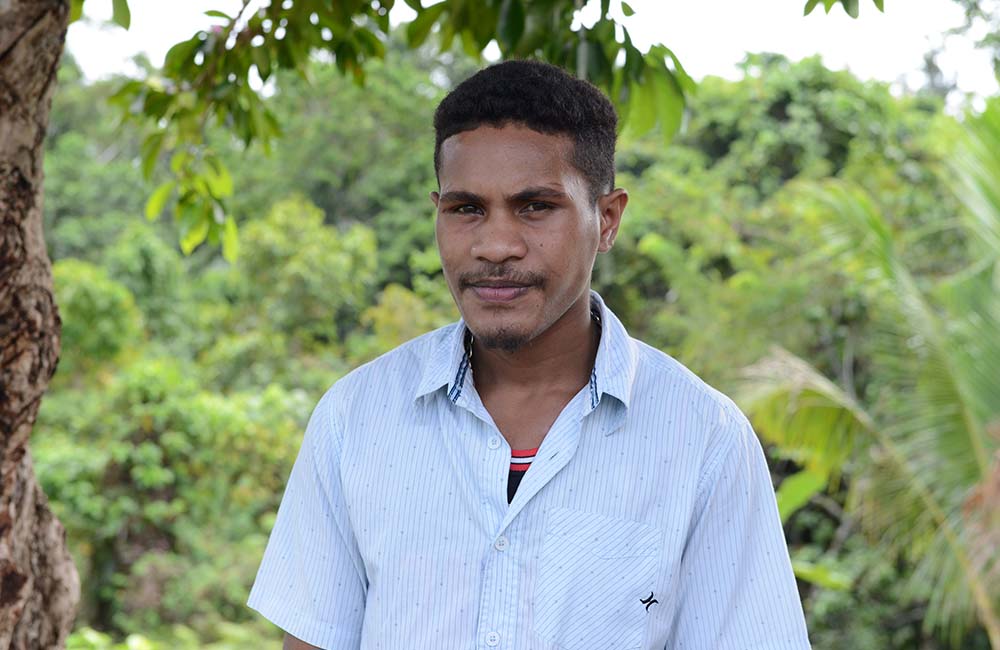
Stephen is proud of his school, but wishes it was better resourced to reflect the hard work
of his fellow classmates and teachers.
Photo: Katharina Glynne/Save the Children Australia
Stephen explains, “this year we experienced Covid-19. I think this has made us see the things that the school needs in terms of the safety of the students…The school needs safety equipment and other resources that students can use in school.”
Following Covid-19 protocols has been especially difficult for Stephen and his peers given the limited water available for handwashing. While Save the Children has recently installed two water tanks, Stephen says climate change complicates things.
He explains, “…the filling of water tanks depend on the rain and rainy season does not come often. We would need a lot of water tanks to sustain the water during the length of time of a sunny period.”
Joyce, the Deputy Principal of the School, echo’s the young man’s point. She says, “in our situation we have water supply… we have the source, the piping, [but] somehow this climate change affects the source, so we don’t receive water from the water source.”
#4: increase school resources & better support parents
Stephen’s school is also in need of repairs, like many other rural schools in the area that struggle for resources. In the primary school, floorboards have holes in them, and lights aren’t working. Many school desks are old and broken.
“In my opinion I think the school needs some resources and some materials to extend the classrooms,” Stephen says.
Joyce agrees. She wishes her school had better access to resources so that students could board on campus. Children confide in Joyce the difficulties some face at home, including neglect and family violence.
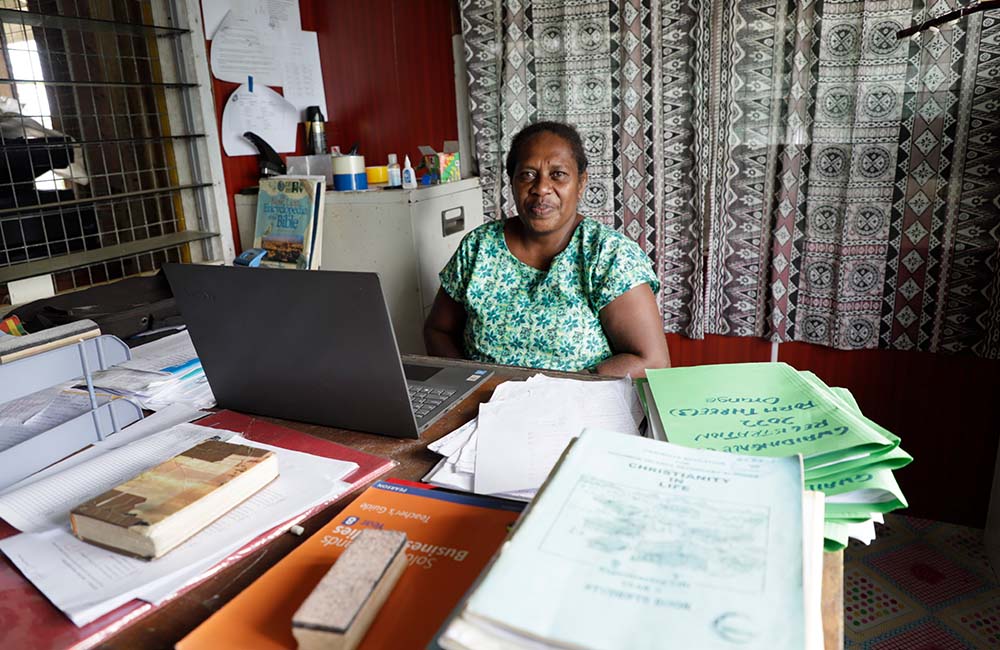
As the Deputy Principal of the school, Joyce knows what the school needs to reach its full potential.
Photo: Collin Leafasia / Save the Children Solomon Islands
“One of the biggest problems here is when students travel a long distance, when they arrive at the school compound you can hear some say ‘excuse me madam I am hungry, I have to go back,’” she says. “So, what most are telling us, some parents support their children [at home], some not. The students are struggling by themselves to make their way to school…”
To address this issue, we’re providing training to teachers and caregivers that aims to end violence of any kind against children, help shift harmful gender norms and improve the positive parenting capacities of fathers, mothers, and other caregivers.
Community voices drive change
Save the Children is working closely with 12 schools across the Solomon Islands to make sure students like Princely, Faith and Stephen are safe at school, each and every single day.
With the support of the Australian Government through the Australian NGO Cooperation program, we’ve already reached over 9,063 students and teachers with clean water, disaster planning, training and learning resources.
Together with government and our local partners, we’ll make sure every child is safe and sound at school.
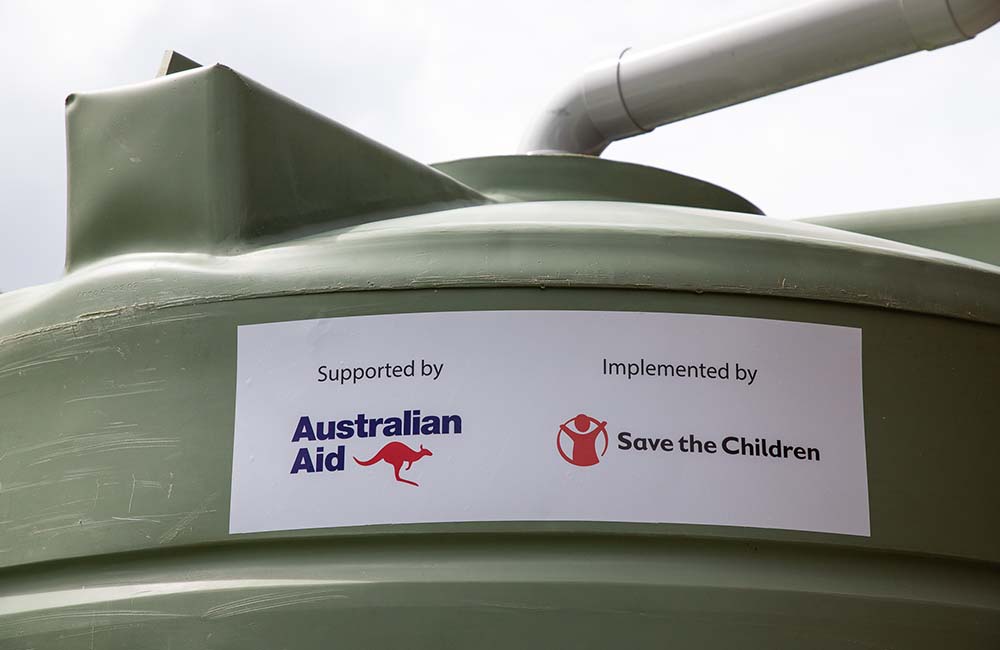
This project is supported by the Australian Government through the Australian NGO Cooperation Program.
Photo: Collin Leafasia / Save the Children Solomon Islands